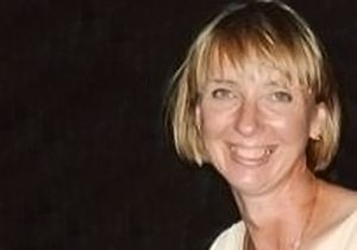

|

|
IN MEMORIAM
Irene Bierman-McKinney
Professor of Art History
UC Los Angeles
1942-2015
Born Irene Abernathy, Irene attended as an undergraduate Western College for Women, which is now part of Miami University in Ohio. She then went on to take an M.A. in Middle East Studies at Harvard and then a certificate in Arabic from AUC. For the next half decade she taught courses on Islamic art at Portland State University and the University of Washington. All the time she was working on her University of Chicago Ph.D. which she completed in 1980.
A major change in her intellectual and professional life took place in 1981 when Irene had the opportunity to interact with a wide range of art historians as a fellow at CASVA [Center for the Advanced Study of the Visual Arts], which is part of the National Gallery in Washington, D.C. From there she went to UCLA for her first and only tenure track position retiring in 2012 as professor emerita. As an administrator Irene was known for her professionalism, openness and fairness and UCLA took advantage of those traits. She served as Director of their Middle East Center for 8 years and later as Chair, Department of Art History. Outside UCLA Irene served as an interim director of ARCE in Cairo. She was the only art historian president of MEM [Middle East Medievalists] and during her career an active committee member of many other academic organizations including MESA.
Her willingness to “think out of the box” and to create collaborative projects resulted in a number of international activities. The following are examples of her work: Director, CAORC [Council for American Overseas Research Centers]/Getty Foundation Professional Mediterranean Heritage Training Program, Istanbul; Co-Director, University of Washington/Getty Foundation Summer Institute in Istanbul; Co-Director. & PI, UCLA/Getty Foundation Summer Institute in Istanbul; and Co-Director, ARCE/IFAO [American Research Center, Cairo, Institut français d'archéologie orientale] 4-year Research project in Cairo including 3 international conferences. Her publication record included 7 authored or edited books, 25 articles, and numerous exhibition pamphlets, catalogue descriptions and project reports. As Nasser Rabbat wrote “Her scholarship was both historical and interpretative, solidly rooted in research and knowingly conversant with theory. Her work on the role of public writing in Islamic iconography was path-breaking; her study of the Ottomanization of cities extremely inventive, and her understanding of the function of conservation in our understanding of cities today constructively critical.”
As a mentor to graduate students, Irene set exceptionally high standards and deliberately limited the number she would work with. As Wendy Shaw, one of her Ph.D. students, reflecting the voice of her almost dozen Ph.D.s, wrote “Renie was my first teacher in art history, and I never realized how unique she was until I entered the world and discovered the breadth with which she enabled her students to think outside of the boundaries of disciplinarity. She was an amazing advisor for me in knowing how to encourage me through research when I was lost, and also in helping me learn how to rein wild ideas into more unambiguous forms of expression. She taught me how to make a discipline into a project that could interface with political expression. I feel echoes of her teaching in my own almost every day, especially now that I have my own doctoral students. In this sense, I think she lives on in how we approach our careers as well as in how we give shape to our work. I particularly appreciate her desire to engage students of all levels in excitement about discovering the world, her respect for the multiplicity of cultures and people in them, and her professionalism.”
Professor Jere Bacharach from the University of Washington